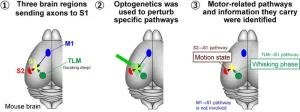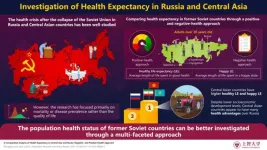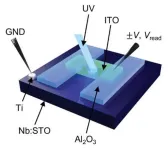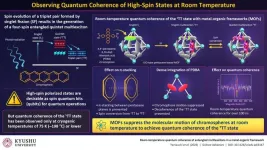In the study, researchers from the Public Health Informatics, Computational and Operations Research (PHICOR) group, the CUNY Graduate School of Public Health and Health Policy (CUNY SPH), and the National School of Tropical Medicine at Baylor College of Medicine (BCM) show that having a universal vaccine at the start of the pandemic would have had substantial health and economic benefits under almost all scenarios tested. The study will be published Jan. 11 in the Lancet’s eClinicalMedicine: https://www.thelancet.com/journals/eclinm/article/PIIS2589-5370(23)00546-1/fulltext
In order to determine the value of investing in developing and stockpiling a universal coronavirus vaccine, the team developed a computational model that simulated the entire U.S. population, the introduction and spread of a novel coronavirus like SARS-CoV-2 in 2020 and the resulting health (e.g., infections, hospitalizations) and economic (e.g., direct medical costs, productivity losses) outcomes. The experiments simulated what would happen if a universal coronavirus vaccine was available at the start of the COVID-19 pandemic.
Vaccinating with a universal coronavirus vaccine as a standalone intervention (e.g., no face mask use or social distancing) was cost-saving even when its efficacy was as low as 10% and only 10% of the U.S. population received the vaccine. For example, when a universal coronavirus vaccine has 10% efficacy, vaccinating a quarter of the U.S. population within two months of the start of the pandemic averts an average of 14.6 million infections and saves over $27 billion in direct medical costs. Such low vaccine coverage at the start of the pandemic could occur if a vaccine were only made available to certain high-risk subpopulations (e.g., 65 years and older, those with weakened immune systems, frontline workers), similar to the approach when mRNA vaccines became available in December 2020.
"COVID-19 was the third major and serious coronavirus epidemic or pandemic following SARS in 2002 and MERS in 2012, thus, we should anticipate a fourth coronavirus outbreak within the next decade or so,” says Peter J. Hotez, MD, PhD, dean of Baylor’s National School of Tropical Medicine and co-director of the Texas Children’s Hospital Center for Vaccine Development. "A universal vaccine is cost-effective and cost-saving and a priority for advancement."
A universal coronavirus vaccine was also shown to be highly cost-effective even if a more specific and more efficacious vaccine came to market. For example, the study shows if it takes four months or longer for a strain-specific vaccine to reach the market, using a universal vaccine was still cost cost-saving. In a scenario where a strain-specific vaccine has 90% efficacy but is unavailable for two months after the start of the pandemic, the results from the model show that vaccinating only 10% of the population with a universal vaccine that has 10% efficacy at the start of the pandemic can save over $2 billion in societal costs (e.g., direct medical costs and productivity losses from absenteeism). Given the time required to develop a strain-specific vaccine during a pandemic to match circulating strains of the virus, this highlights the importance of having a universal vaccine readily available as a stopgap.
"Our study shows the importance of giving as many people as possible in a population at least some degree of immune protection as soon as possible," explains Bruce Y. Lee, MD, MBA, executive director of PHICOR and professor at CUNY SPH. "Having a universal vaccine developed, stockpiled, and ready to go in the event of a pandemic could be a game-changer even if a more specific vaccine could be developed three to four months later."
Generally, results from the model found that a universal vaccine would end up saving money if the cost to get a person vaccinated (e.g., cost of the vaccine itself, distribution, administration, storage, research, and development) is as high as $10,390 from a societal perspective.
This work was supported by the National Science Foundation proposal number 2054858, the Agency for Healthcare Research and Quality (AHRQ) via grant 1R01HS028165-01, the National Institute of General Medical Sciences as part of the Models of Infectious Disease Agent Study network under grants R01GM127512 and 3R01GM127512-01A1S1, the National Center for Advancing Translational Sciences of the National Institutes of Health via award number U54TR004279, the National Institute of Allergy And Infectious Diseases of the National Institutes of Health under Award Number P01AI172725, and by the City University of New York (CUNY) in support of the Pandemic Response Institute (PRI). Statements in the manuscript do not necessarily represent the official views of, or imply endorsement by, the National Institute of Health, AHRQ, the US Department of Health and Human Services, CUNY, or the PRI.
About CUNY SPH
CUNY SPH is committed to teaching, research, and service that creates a healthier New York City and helps promote equitable, efficient, and evidence-based solutions to pressing health problems facing cities around the world.
About PHICOR
Since 2007, PHICOR (www.PHICOR.org) has been developing computational methods, models, and tools to help decision makers better understand and address complex systems in health and public health. Follow @PHICORTeam on Facebook, LinkedIn, YouTube, and Twitter for updates.
About PRI
In coordination with the New York City Department of Health and Mental Hygiene (DOHMH) and New York City Emergency Management (NYCEM), the PRI works with New Yorkers in communities in each of the five boroughs to develop locally tailored health solutions, information and resources to develop greater resilience to the adverse consequences of public health emergencies.
About BCM
BCM (www.bcm.edu) in Houston is recognized as a health sciences university and is known for excellence in education, research and patient care. Located in the Texas Medical Center, Baylor has affiliations with seven teaching hospitals and jointly owns and operates Baylor St. Luke’s Medical Center, part of CHI St. Luke’s Health. Follow Baylor College of Medicine on Facebook (http://www.facebook.com/BaylorCollegeOfMedicine) and Twitter (http://twitter.com/BCMHouston).
About Texas Children’s Hospital Center for Vaccine Development
Texas Children’s Hospital Center for Vaccine Development is one of the leading vaccine development centers in the world. Established in Washington DC as the Sabin Vaccine Institute Product Development Partnership (PDP) in the year 2000 and after relocating to the Texas Medical Center in 2011, it rebranded as Texas Children’s Center for Vaccine Development. For the past two decades it has acquired an international reputation as a non-profit PDP, advancing vaccines for poverty-related neglected tropical diseases (NTDs) and emerging infectious diseases of pandemic importance. In addition, it builds and strengthens capacity for vaccine development locally and with foreign nations and leads global efforts to guide and influence vaccine policy and advocacy through “vaccine diplomacy” as an international bridge for peace and vaccine development capacity.
END





